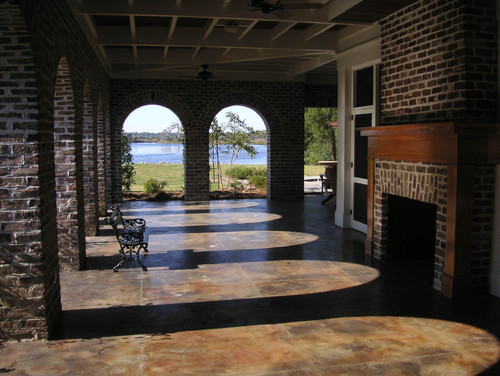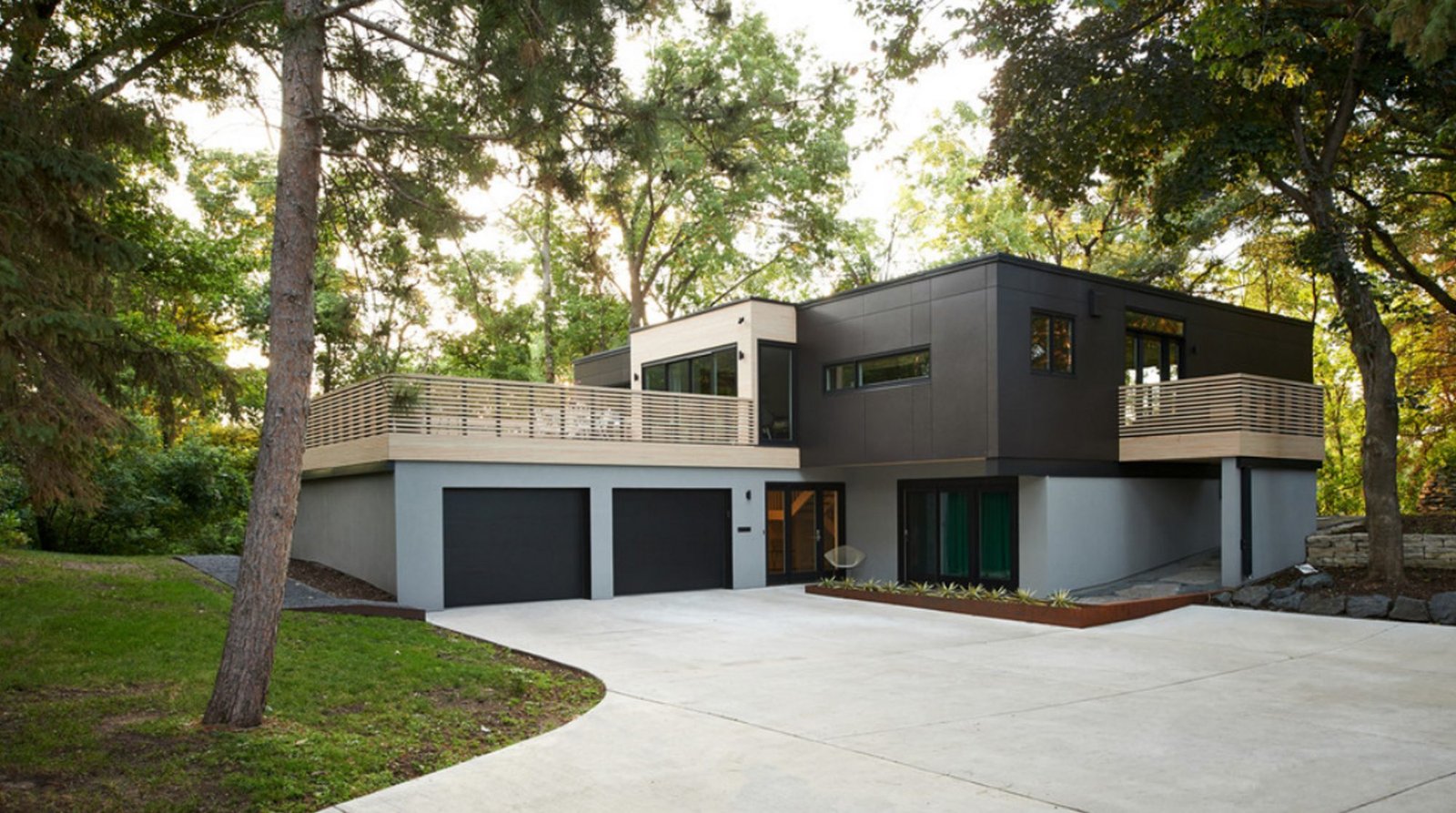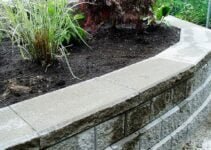Stain concrete (or colored concrete) can improve the look of your old gray patio. In fact, concrete stains can improve the look of all concrete items, including driveways and concrete buildings.
Acrylic-, polymer- and acid- based stains are the most common varieties.
- Acid stains (or acid etch, patina stain, or acid wash) work by chemically reacting with free lime in the surface to produce a natural looking, translucent color. Every concrete surface reacts differently to acids stains making each job unique.
- Acrylic and polymer stains work by simply seeping into the porous surface of concrete. Acrylic stains are waterborne and have pigments that seep into the pores and adhere to the concrete, therefore creating a more consistent, semi-translucent color like that of a dye. Acrylic stains will help mask imperfections and discolorations whereas acid stains actually accentuate them.

Photo by Frederick + Frederick Architects – Search porch pictures
If you would like to look beyond these traditional staining materials, you can find several creative ways to stain concrete, including faux finishing, using powdered stains and letting nature do the work.
Increasingly, handy homeowners are learning how to stain concrete. Even commercial builders have come to prefer concrete acid stain because every application of it is unique. It is the best way way to give a concrete surface a permanent color that will not peel, crack, fade, or grow dull.
For many surfaces, acid and acrylic stains will work equally as well, but which one you choose depends on the look you want.
However, there are situations where one type will work better than the other.
- Acrylic stains are great for old concrete because of its increased porosity over time. If repairs need to be made such as patching pop outs or scaling, then acrylics may be the better choice to help disguise the repairs.
- Acid stains work well with newer concrete because of the availability of free lime. For smooth trowelled interior surfaces with less porosity, acid stains are usually better because they don’t require as much penetration to color the concrete.
How to Stain Concrete Properly
Concrete that is new, old, plain, or integrally colored can be stained.
Step 1: All concrete surfaces need to be prepared before acid stain application. The concrete surface you are staining must be clean and free from unwanted defects and markings. Because concrete stain is translucent, the patterns and variations of the concrete will show through.
There are several steps in cleaning an exterior concrete surface. Always degrease surface, TSP. ( Tri Sodium Phosphate) is a good cleaner, degreaser and easy to use detergent. Rinse well after degreasing and check for water absorption, if there any area where the water beads, treat again. and redo as necessary.
After degreasing pressure wash or clean by mechanical means.
Step 2: Cover any surrounding grass and flowers with painter’s tarp or plastic to protect them from the stain.
Step 3: If you have cracks in your concrete patio, you can repair with concrete repair.
Step 4: When the concrete is dry and any residue is gone, apply sealant. This is the last stage of installation, and it must be done correctly.
Sealant is usually applied by spraying, cross hatch rolling or back rolling and buffing.
Fiber Reinforced Concrete Types | How To Build A House (howtobuildahouseblog.com)


